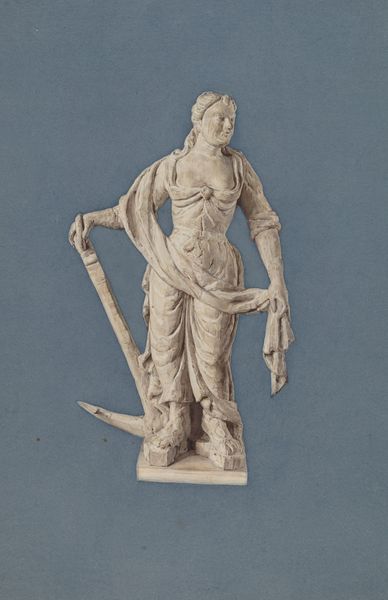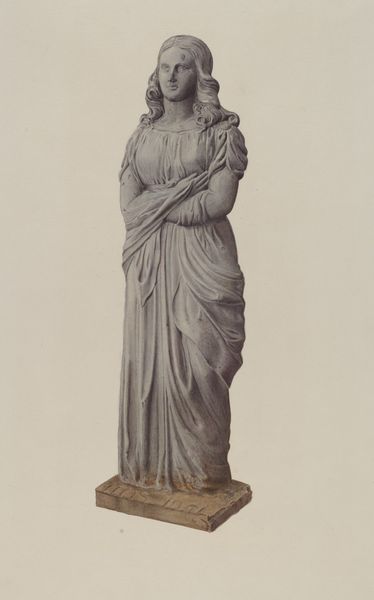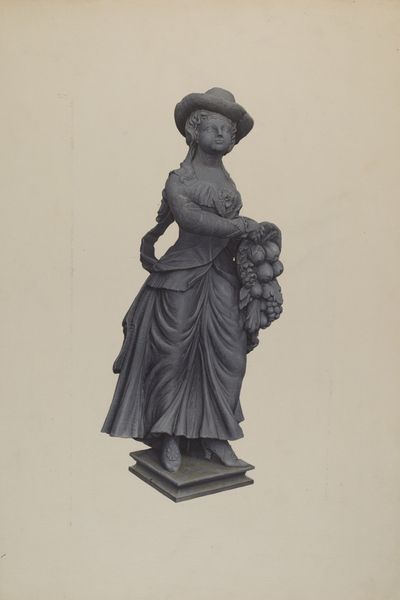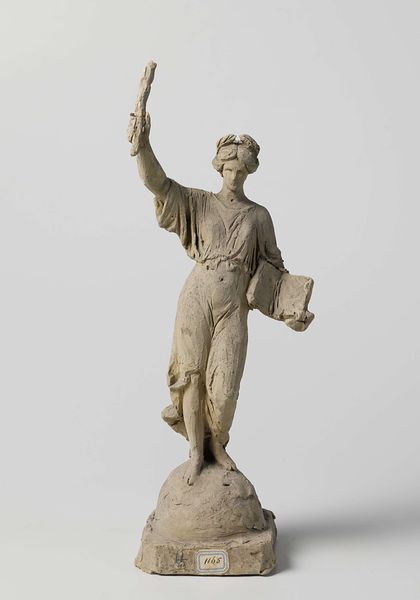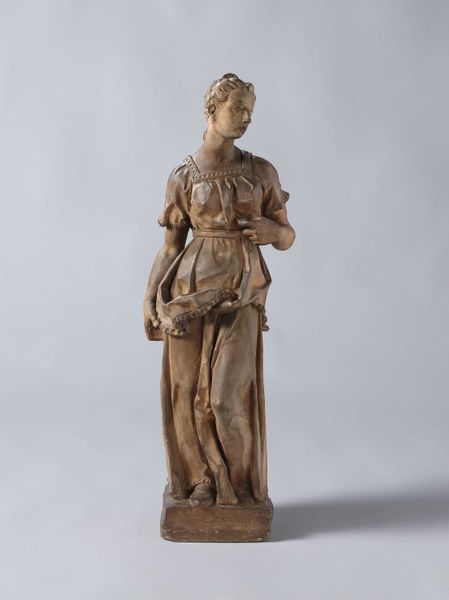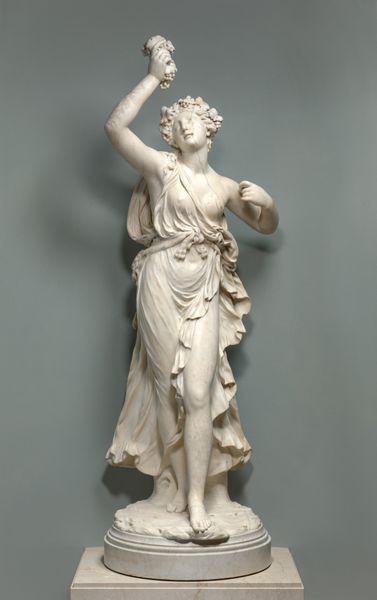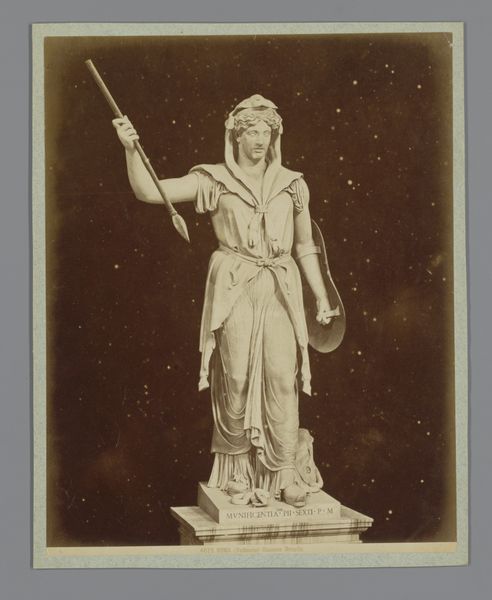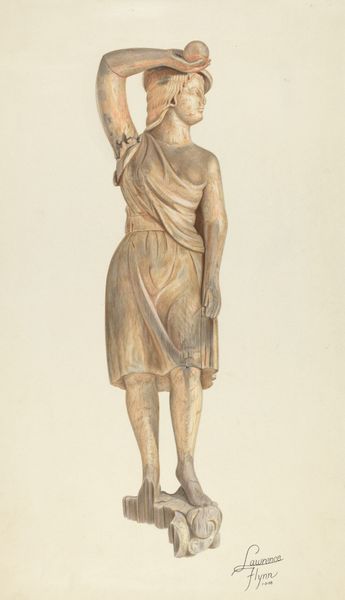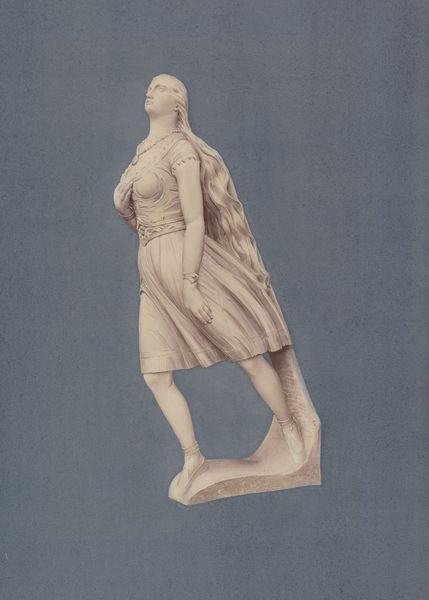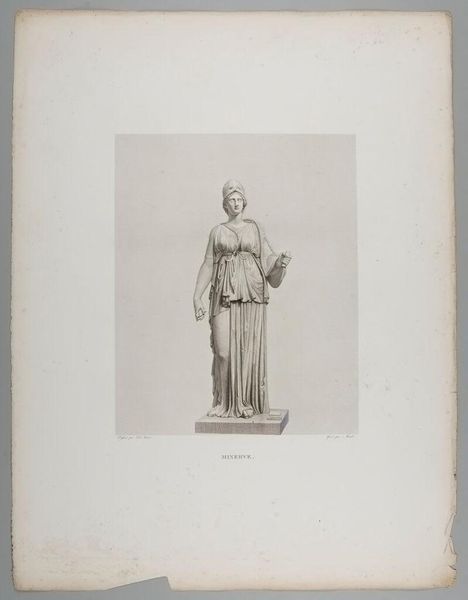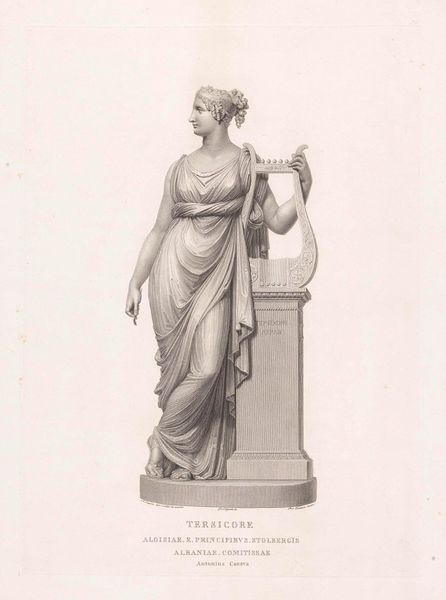
drawing, sculpture, plaster
#
public art
#
drawing
#
allegory
#
sculpture
#
figuration
#
form
#
sculpture
#
plaster
#
history-painting
Dimensions: overall: 50.7 x 37.9 cm (19 15/16 x 14 15/16 in.)
Copyright: National Gallery of Art: CC0 1.0
Curator: Here we have John W. Kelleher’s "Justice," dating from around 1939, executed in plaster. Visually, she strikes a formidable figure, no? Editor: Yes, a figure in seeming opposition to the material; it has an unexpected assertive quality to it given that the medium is plaster. It almost looks as though she's leading some sort of... uprising? Curator: An uprising indeed—perhaps in defiance of the period’s global unrest. The figure is of course the allegorical personification of Justice, blindfolded, bearing a sword, but in Kelleher’s depiction, she's raising her other fist defiantly, in a rather confrontational gesture. Editor: It's an interesting choice of material to realize what is traditionally a monumental concept, don't you think? Plaster often acts as a kind of surrogate material. Typically, a means to an end, in the journey toward bronze or marble. I'm curious about what elevating such a humble material can do to the piece conceptually. Curator: A valid point. One might consider the wider socio-political context, specifically the social realism movement which encouraged the proliferation of art in public spaces. Plaster would’ve provided an accessible material that didn't carry the same class connotations that, say, bronze or marble held. Editor: Right. Focusing on material access brings this question of justice out of the realm of pure concept and plants it firmly in the soil of material reality. What would justice truly look like if it was a readily accessible substance, made and remade? And furthermore, who gets to make it? Curator: Exactly. And her somewhat casual dress suggests accessibility, downplaying her lofty symbolism and democratizing her significance, if only symbolically. Editor: Kelleher's figure makes a powerful claim, disrupting hierarchies of both material and symbolic register. It prompts us to ask, What is the social role of symbolism, and whom does it ultimately serve? Curator: Indeed. By challenging conventions, the piece serves as a reminder of the evolving nature of societal ideals and their visual representations. Editor: And a prompt to reflect on the relationship between ideals, materials, labor, and our contemporary notions of justice. Curator: It gives us plenty to contemplate moving forward.
Comments
No comments
Be the first to comment and join the conversation on the ultimate creative platform.

